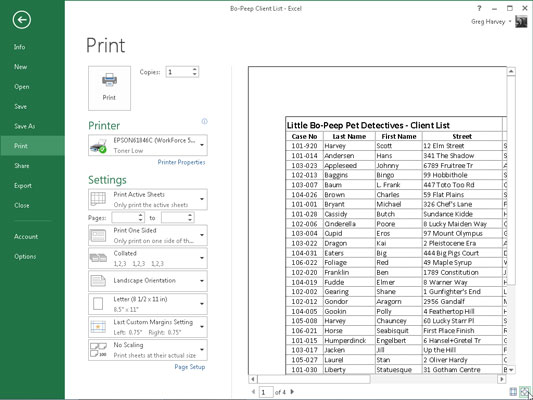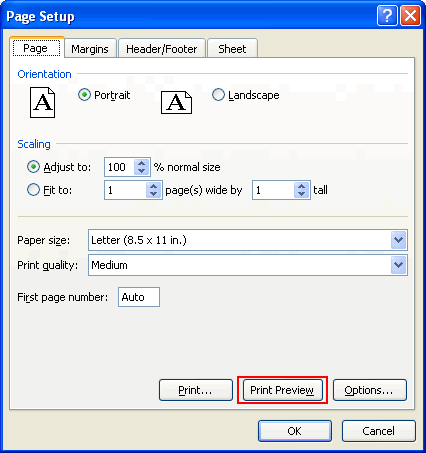

This example shows how to apply printer setting to show the print preview dialog. Set the Preview property of the PrintInfo class to true in order to allow users to preview spreadsheets and see the modifications concurrently while the settings of the printer are being changed. For more information, refer to Customizing the Print Preview Dialog. You can also customize the Print Preview settings to show the Print Preview Dialog like Excel. For more information on printing and previewing in Spread Designer, refer to Printing a Sheet from Spread Designer and Previewing a Sheet in Spread Designer. You can also print and preview the printing within the Spread Designer. You can print from the print preview dialog or close the dialog when done. You can set the preview to display one, two, four, or six pages of the spreadsheet per printed page.

The print preview dialog allows you to zoom in and out to change the scale of what you see in the preview.

The PrintPreviewShowing event fires prior to displaying the dialog and supplies you with both the PreviewDialog and the PreviewControl in its event parameter list so you can make on-the-fly modifications to the PrintPreviewDialog and the PrintPreviewControl objects. Two additional printing features are: the PrintPreviewShowing event and the ability to set your own print preview dialog with the SetPrintPreview method (and the corresponding GetPrintPreview method), all members of the FpSpread class. With this button, you can set the orientation (portrait and landscape) and margins etc. Use the ShowPageSetupButton property of the PrintInfo class to show the PageSetUp button on the toolbar of the Print Preview Dialog. Use the OwnerPrintDraw method of the FpSpread class to provide a print preview dialog with options for previewing the pages before printing. For example, if the active sheet is not sheet2, then you only. You can test for the activesheets name to instruct vba as to what you want it to do depending on what the name is. Code: Private Sub CommandButton2Click () ActiveSheet.PrintPreview End Sub. The following image shows the basic Print Preview Dialog that appears on your screen. but to show the print preview instead of just going straight to printing you can use this. You can use the Preview property in the PrintInfo class to preview a sheet. MM-PUR-GF-OC, Message determination and printing, Problem About this page This is a preview of. If you only want to print out specific info from an article, read our article: How to print only selected text from a webpage.You can preview what the printed pages will look like for a sheet and you can allow your end user to preview the printing. ALV Grid after excluding some buttons from the toolbar. Nothing is worse than someone printing out 500 pages when you need the printer to get one simple page.Īlso, remember you don’t need to waste time and ink printing out entire web pages either. This is a great way to save printer ink and paper, as well as time for you and your colleagues. From the ribbon under Page Layout, click Print Area > Clear Print Area. If you get too deep into adjusting print areas, they will stay until you clear them out. You can tweak the preview area and manually type in more cells if you want to include them. You can get deep into the printer settings. And you can select the printer you want to use and adjust print settings. Now you will get a view of the area you’re printing out. This allows you to include any headers or labels associated with the data. From here, type in the Columns and Rows that you want to repeat (if any), then click on Print Preview.
#Excel 2013 print preview button windows#
Next, select the Sheet tab in the Page Setup windows that appears. You won’t really notice anything happen to the document at that point, but next, while still under the Page Layout tab, click Print Titles. Start by opening the Excel spreadsheet you need, hold down the Ctrl key and highlight the area of the document you want to print out.Īfter selecting the area you want to print out, go to Page layout > Print Area > Set Print Area. The controls are just located in different areas on the Ribbon and toolbars. Note: For this article, I am using Excel in Office 2013, but the principle is the same in other versions of Excel, too.


 0 kommentar(er)
0 kommentar(er)
